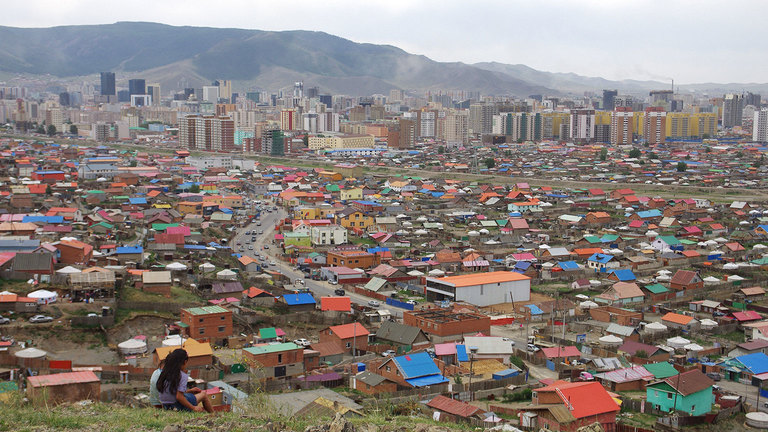
Ulan Batar is the capital of Mongolia. When one thinks of Mongolia, perhaps your mind is cast back to the ancient history of the Mongolian Empire. Overtaking vast swathes of the known Earth and impacting history forever. Such mighty empires carry their history forth and it remains etched into their capitals. Who can think of modern Rome without picturing, say, the Coliseum, a remnant of centuries past when Rome stood atop the world stage? Yet when one thinks of ancient Mongolia, the capital of Mongolia doesn’t hold quite so much cultural fame. Ulaanbaatar… Why does it not hold that same fame? But all the same, why is it still magnificently important? We’ll start from the beginning.
History of the Capital of Mongolia
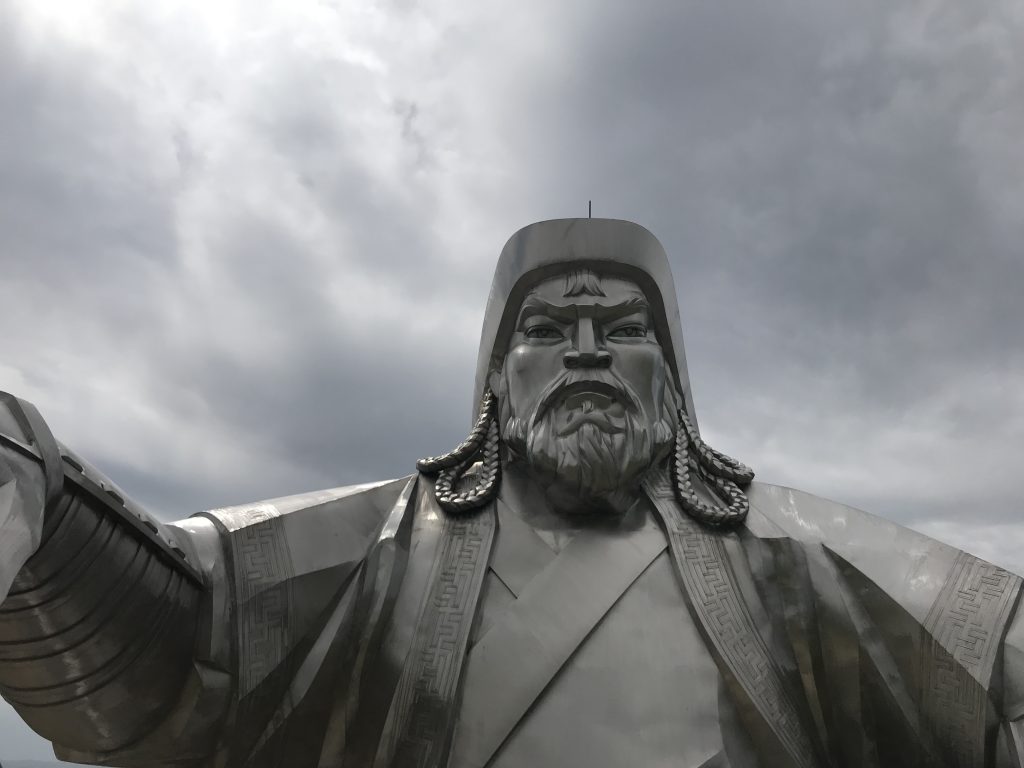
How can I put this… Ulaanbaatar was never the capital of the Mongolian Empire. That honor fell upon Avarga in the Genghis Khan era, between 1206 and 1235. Following Genghis Khan’s death, his successor, Ögedei Khan, the capital of Mongolia then became Ulaanbaa– Oh wait, no, it became Karakorum between 1235 and 1260. Okay, fair enough, the Mongolian Empire grew a lot and lasted a long time. Avarga was pretty much just a minor town and Karakorum wasn’t that much better. So what followed was Ulaa– No, it was Khanbaliq. You know, at this point you’re probably wondering why you’ve never heard of any of these ancient capitals. Well I can guarantee you’ve heard of Khanbaliq because its modern name is Beijing.
By this stage, the Mongolian Empire had collapsed into four separate empires, the Golden Horde who’s capital was… Sarai. Then the Chagatai Khanate who’s capital was Almaliq. The Ilkhanate had Maragheh, then Tabriz and finally Soltaniyeh. Lastly there was the Yuan dynasty who held control of Khanbaliq (Beijing) and had a summer capital in Shangdu. If you look at their respective articles, you might notice that not only are none of these Ulaanbaatar, none of them are even in modern day Mongolia. So… What the hell happened exactly? Officially speaking, the Mongolian Empire was gone by 1368, this marking the final collapse of the great Yuan Dynasty. Technically speaking, the very last remnant of the Mongolian Empire was the Khanate of Khiva, which lasted all the way until 1920, but true historical and geographical links to the empire were all but extinguished there.
The empire that remained within Mongolia proper at this stage was the remnants of the Yuan dynasty, now known as the Northern Yuan Dynasty. This dynasty could hardly be considered an empire, barely able to even hold itself together, with its last commonly accepted capital being either Karakorum again, or Chaghan Baishin (so unworthy of note as to lack a Wikipedia article) under Ligdan Khan who died in 1634. In 1635, his son surrendered to Hong Taiji of China, who officially founded the Qing Dynasty in 1636, which was to rule over all of China until 1912. As you can see, the rabbithole goes extremely deep with this piece of history.
The Founding of Ulaanbaatar
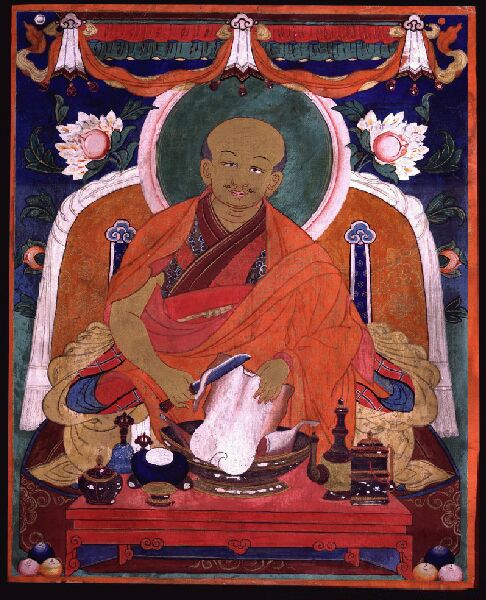
It was three years later, in 1639, when 75km east of Karakorum, Örgöö (Urga) was established, otherwise known as ‘Palace Yurt’. The intention was for this to be the seat of the first Jebtsundamba Khutughtu, Zanabazar, the spiritual head of Mongolia’s particular brand of Tibetan inspired Buddhism. While not a Khan in his own right, Zanabazar could trace his lineage back to Kublai Khan directly. Now, you might notice that Örgöö is not the same name as Ulaanbaatar, nor is this location even close to the present-day Ulaanbaatar. So how is this our Mongolian capital? Well the thing about Yurts is that they’re mobile and this palace yurt was no exception. It moved locations frequently over the years, landing as late as 1778 in its current location, now known as Ulaanbaatar.
The location was the center of religious authority in Mongolia, but that’s not the same as political authority, nor does it qualify as a capital of Mongolia. Due to the competing interests of smaller Khanates, the Qing dynasty in particular and various other factions, it’s hard to even pin down an official capital in this era, though this may well have been the largest populated city. By 1778, the number of monks could be estimated at over 10,000, though it was definitely a religious capital unto itself. For instance, in 1797, the fourth spiritual leader made it law that none could sing, smoke or play chess among other things within the grounds of the religious city. Consuls were opened within its grounds throughout the 1800s and Urga took on exceptional political importance.
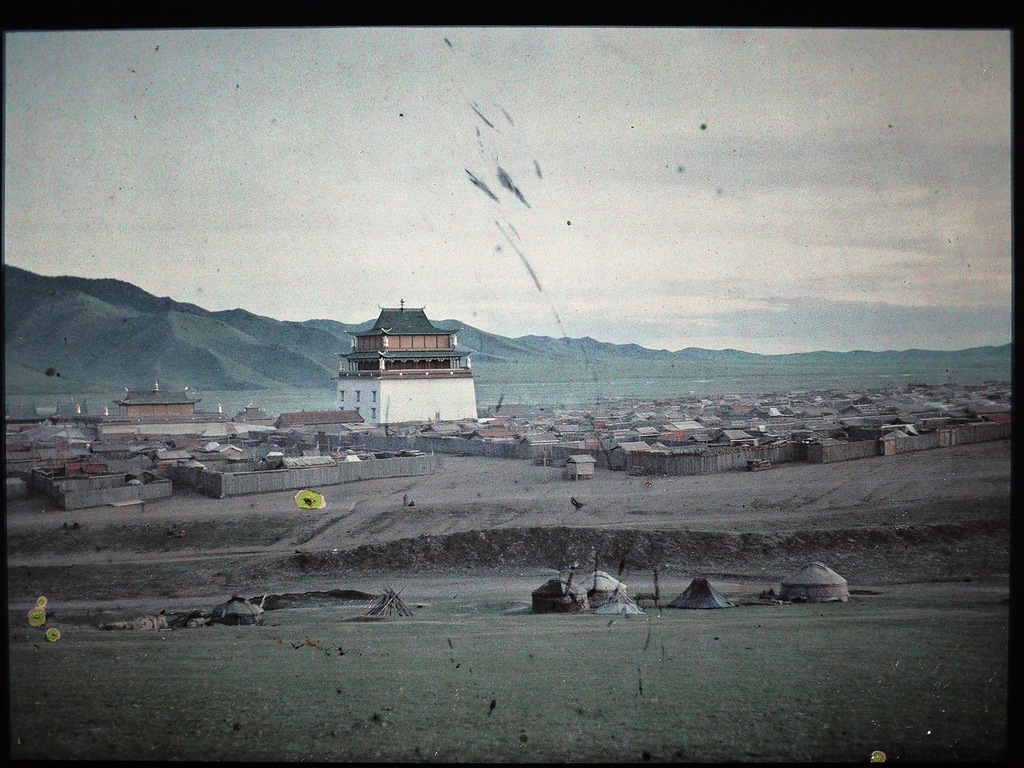
In 1911, the Qing Dynasty was in ruins. Rebellions in China were ousting its authority and Mongolian leaders were plotting a rebellion. On December 29th, 1911, the 8th religious leader of Urga was declared Bogd Khan and declared ruler of independent Mongolia. It only made sense for the seat of his religious authority to then become the seat of political authority as the capital of Mongolia as well. Due to the sheer power of China, even in its dying days, this independence effort was crushed by 1919 by Chinese warlord Xu Shuzheng. By the 1910s, the estimated population of the city was at over 60,000, with the number of monks being at around 20,000 by 1919. On February 4th 1921, Russian monarchist Roman von Ungern-Sternberg attacked the Chinese warlord and drove his forces out of Urga, restoring Bogd Khan to the throne while simultaneously conducting pogroms against the foreign and particularly Jewish communities of the city.

By March, a faction of Mongolian communists led by Damdin Sükhbaatar and armed by the newly formed Soviet Union crossed into the country and crushed the white Russian forces by June of 1921. In July, the communists took over Urga and Bogd Khan had all authority stripped from him. He was allowed to remain as a nominal leader until his death on the 20th of May 1924, at which point the new constitution declared the monarchy ended. At last, in October 29th 1924, the name of the capital was changed to Ulaanbaatar, meaning ‘Red Hero’, now to serve as the capital of the Mongolian People’s Republic, the world’s second socialist state after the USSR.
Mongolia in the Socialist Era

The Mongolian People’s Party had their work cut out for them when they took control of Mongolia. Being a country largely made of nomads, strongly consolidated by religion and monarchy and having a long history of imperialist subjugation by China, it would take a lot of work to form a socialist republic. Following the Soviet model, particularly during the Stalin era, led to mass collectivisation of agriculture (which remained essentially incomplete until the Negdel system of the 1950s) and the purging of religious institutions. Soviet military forces were called in to bolster the revolutionary government during the early 30s as this was conducted, essentially part of the Great Purge also ongoing in the USSR proper. Much of this was under Nikolai Yezhov, head of the NKVD who was later executed for his excesses during the purge. Stability followed this period of extreme turmoil and Mongolia could at last be considered to be an independent nation.
Mongolia assisted the USSR during the second world war and the capital of Mongolia certainly reaped the benefits of this partnership. The city began to greatly expand in the post-war years, moving from traditional Ger houses to rows of apartment buildings much like in the USSR itself. Nomadic lifestyle began to give way to modern urbanisation, with the war-era need for heavy industry transitioning into a civil industrial sector, perhaps for the first time in Mongolia’s history. Literacy rates began to grow and food production stabilised.
With the foundation of the People’s Republic of China in 1949, relations with the USSR cooled somewhat. China continued to insist upon its ownership of inner-Mongolia, a large tract of land which remained Chinese even after the Mongolian revolution. The USSR was unwilling to push for Mongolian reunification as an independent state, leaving the Mongolian People’s Republic stuck awkwardly in the middle of competing political interests. While some bureaucrats pressured then-leader Khorloogiin Choibalsan for potential incorporation into the USSR, they were harshly rebuked for this. Mongolia maintained its independence in a rather uncomfortable position between two competing socialist superpowers.
In the late 50s, relations with China improved and Chinese laborers helped to grow Ulaanbaatar’s industries, though later canceling these efforts in 1962 as relations with the USSR worsened and China was forced to refocus on its own economy. Relations soured further as Mongolia harshly rebuked China’s criticisms of Soviet revisionism, leading to the stationing of the Soviet military within Mongolia as a counterbalance to any potential Chinese invasion.
Collapse of Socialist Mongolia
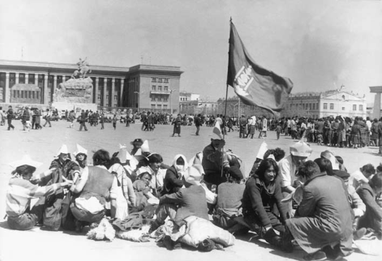
On the 10th of December 1989, Ulaanbaatar became the center for the first pro-reform protests in the country. Owing to the situation in Europe, with the collapse of the eastern bloc and Gorbachev’s ill-fated ‘Glasnost and Perestroika‘ reforms, desire for a similar reform in Mongolia became popular among the youth. Tsakhiagiin Elbegdorj had been growing in prominence for some time as a reform advocate and made his influence known with a public demonstration in front of the Youth Cultural Center in Ulaanbaatar. He announced the creation of the Mongolian Democratic Union, a coalition of parties and interest groups who primarily united on their desire for reform. Lack of government response over the following months led to the protests increasing in size and scale across the country.
On the 21st of January 1990, over a thousand protesters camped in Sükhbaatar Square and waved banners in support of Mongolian reform. They included posters of Genghis Khan, a figure opposed within official state policy, and a modified state flag with the star removed from it. Protests swelled and by March, over a 100,000 nationally were calling for the resignation of the government. Jambyn Batmönkh, then general secretary of the Mongolian People’s Revolutionary Party actively opposed some calls within the government to disperse the protests with force, eventually conceding to calls to dissolve the politburo and resign on the 9th of March. With this, socialist Mongolia had officially come to an end. Granted, the first post-socialist election saw the (now reformed) People’s Revolutionary Party of Mongolia win in a landslide, with the democratic coalition only wresting power away in 1996.
Modern Capital of Mongolia
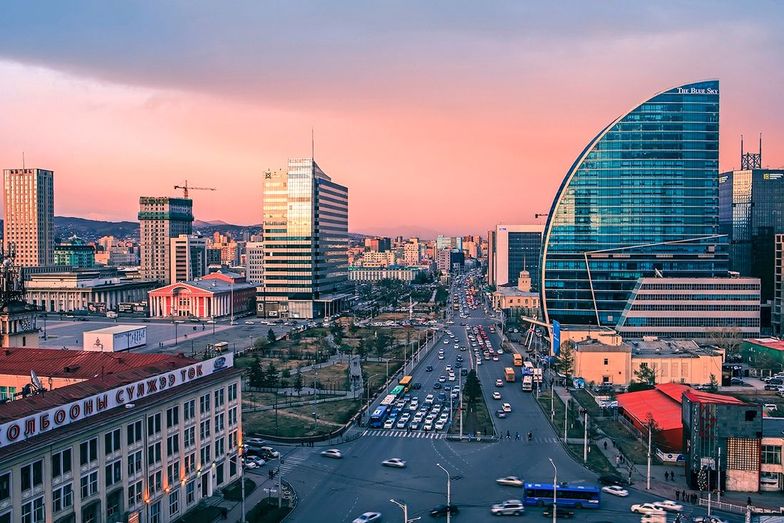
With the end of socialism, Ulaanbaatar began to receive further foreign investment, leading to an influx of people from the rural regions to live and work there. The collective farm system which had allowed very small villages to subsist effectively and independently throughout socialism were also coming to an end, forcing the hand of many more and, naturally, driving them to Ulaanbaatar. The city now hosts over a million residents, roughly half the population of the country and still continues to grow. A boom in building construction began to accommodate this, bloating the size of the city outright and leading to a few social problems that it now grapples with.
2008 saw a resurgence of violence in the capital of Mongolia as allegations came out that the 29th of June legislative election had been fraudulent. The Mongolian People’s Revolutionary Party won by a large proportion and the Democratic Party alleged that some people had been voting twice for the MPRP. On the 1st of July, thousands gathered in front of the MPRP office in Ulaanbaatar and began pelting it with rocks, leading to riot police responding with tear gas and arrests. The protest soon erupted into a full-scale riot and a four day state of emergency was called, with the military being called in the following day to reinforce the police. By the 3rd of July, the protest had come to a close, with the results of the election being upheld. Five had died, 300 were injured and 700 were arrested, with most being released over the course of the following week.
Since then, Mongolia has seen a rapid growth, with the capital of Mongolia, Ulaanbaatar in particular singled out for its successes. In 2011, Mongolia recorded a GDP growth of 17.3%, the fastest in the world, leading to a further influx of investment in Ulaanbaatar. For an idea of the kind of things there are to see and do there, as well as how to get there in the first place, we have another article that covers it nicely. For those who’d love to visit this land for themselves, check out our tour of both inner and outer Mongolia for 2021!





